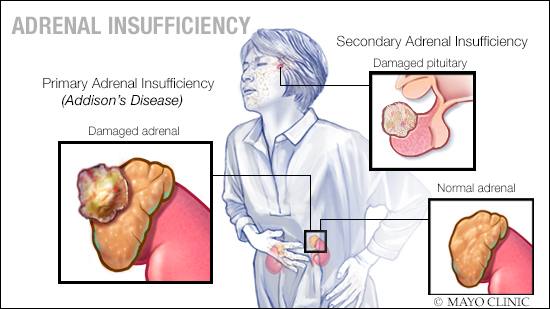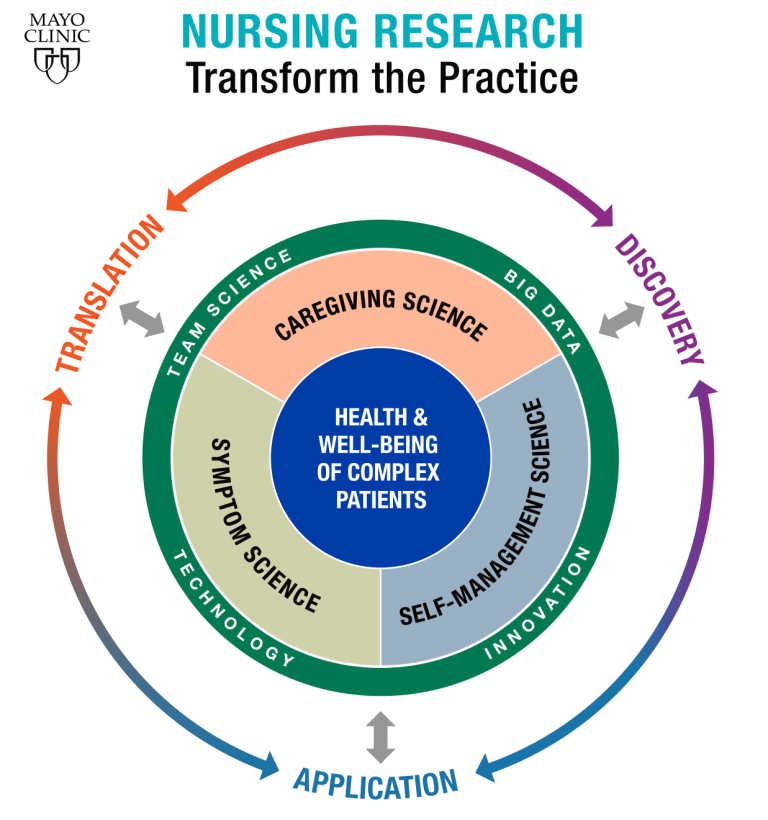-
Mayo Clinic Q and A: Understanding adrenal insufficiency

DEAR MAYO CLINIC: What is adrenal insufficiency? Is it the same as Addison’s disease?
ANSWER: There are a few forms of adrenal insufficiency, which is an uncommon disorder caused by the adrenal glands not making enough of certain hormones. Primary adrenal insufficiency, also known as Addison’s disease, is one form.
Your adrenal glands are located on the top of each kidney. Hormones secreted by the adrenal glands include cortisol and aldosterone. Cortisol helps your body respond to stress, such as from an injury or infection. It also helps glucose metabolism and helps with proper cardiovascular function. Aldosterone helps maintain proper blood pressure through the balance of sodium, potassium and water in the body.
There are two main categories of adrenal insufficiency: primary adrenal insufficiency and secondary adrenal insufficiency. Primary adrenal insufficiency occurs when adrenal glands are diseased or damaged. Most often, this takes the form of a long-term (chronic) disease — Addison’s disease — that occurs when your immune system mistakenly attacks and destroys adrenal gland tissues.
With secondary adrenal insufficiency, the pituitary gland, located in the brain, makes an insufficient amount of a hormone called “adrenocorticotropic hormone.” This hormone stimulates the adrenal gland to produce cortisol. If the pituitary gland somehow is damaged or altered, it can affect adrenal gland cortisol secretion, even if the adrenal glands are healthy. Secondary adrenal insufficiency is most commonly caused by medications, such as prednisone, intra-articular injections with steroids, or steroid creams. In this situation, the adrenal glands may take days to months to recover function and restore proper cortisol production.
Signs and symptoms of adrenal insufficiency often come on gradually and progressively worsen over months. Diagnosis sometimes is delayed because early symptoms can easily be mistaken for something else. The most common signs and symptoms include muscle weakness and fatigue; muscle, joint or abdominal pains; and decreased appetite and weight loss.
In addition, signs and symptoms can include lightheadedness, feeling wiped out by an ordinary illness, depression, nausea, vomiting or diarrhea. Cravings for salt and darkening of skin, especially on the face and hands, or on moles, scars or skin folds, are seen only with primary adrenal insufficiency.
Symptoms of adrenal insufficiency can develop suddenly and rapidly into an adrenal crisis. This can occur in someone who has been diagnosed with adrenal insufficiency or in someone who has yet to be diagnosed. Often, an adrenal crisis is triggered by health-related stress, such as an illness, surgical procedure or serious injury. These are also the times that higher cortisol production usually would occur in someone without adrenal insufficiency.
As symptoms of adrenal crisis escalate, most people feel terrible — perhaps with severe abdominal pain, nausea, vomiting and lightheadedness — and realize that emergency care is required. Some people may pass out, requiring help from others. An adrenal crisis can result in death if not promptly treated.
Adrenal insufficiency can be confirmed or ruled out with blood tests. Although there’s no cure, primary adrenal insufficiency can be managed effectively by taking cortisol and aldosterone replacement hormones, with the goal of stabilizing hormone levels and relieving signs and symptoms.
Treatment plans also involve preparing for the possibility of an adrenal crisis. If you have adrenal insufficiency, have an individualized, written action plan for times when you may be at heightened risk of adrenal crisis. This includes periods of health stress and times when worsening symptoms indicate you may be headed toward an adrenal crisis. (adapted from Mayo Clinic Health Letter) — Dr. Irina Bancos, Endocrinology, Mayo Clinic, Rochester, Minnesota







